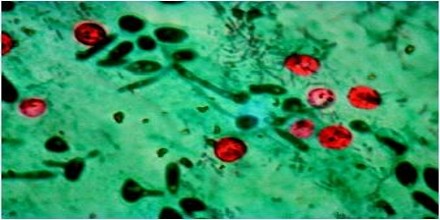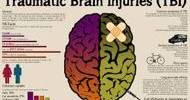Cryptosporidiosis
Definition
Cryptosporidiosis is a diarrheal disease caused by microscopic parasites, Cryptosporidium, that can live in the intestine of humans and animals and is passed in the stool of an infected person or animal. Cryptosporidiosis refers to infection by the sporeforming protozoan known as Cryptosporidia. Protozoa are a group of parasites that infect the human intestine, and include the better known Giardia. Cryptosporidia was first identified in 1976 as a cause of disease in humans.

Both the disease and the parasite are commonly known as “Crypto.” The parasite is protected by an outer shell that allows it to survive outside the body for long periods of time and makes it very resistant to chlorine-based disinfectants.
Cryptosporidia are normally passed in the feces of infected persons and animals in the form of cysts. The cysts can remain in the ground and water for months and when ingested produce symptoms after maturing in the intestine and the bile ducts. When viewed under the microscope, they appear as small bluish-staining round bodies. Most common sources of infection are other humans, water supplies, or reservoirs. These are contaminated by animals that defecate in these areas.
Facts of Cryptosporidiosis –
- Cryptosporidiosis is a diarrheal disease caused by parasites named Cryptosporidium; the parasites have a life cycle that can be completed in humans and many types of animals.
- The disease cryptosporidiosis is spread from person to person after the parasites are shed into the environment; they may be found in soil, food, water, or on surfaces that have been contaminated with feces from infected humans or animals.

Causes, Sign and Symptoms of Cryptosporidiosis
Cryptosporidium has emerged as the most frequently recognized cause of recreational water–associated outbreaks of gastroenteritis, particularly in treated (disinfected) venues. This is because in the oocyst stage of its life cycle, Cryptosporidium can resist disinfection, including chlorination, and can survive for a prolonged period in the environment. A number of Cryptosporidium infect mammals. In humans, the main causes of disease are C. parvum and C. hominis. C. canis, C. felis, C. meleagridis, and C. muris can also cause disease in humans. The disease is transmitted via the fecal-oral route from infected hosts. Most sporadic infections occur through person-to-person contact. Nonetheless, transmission can also occur following animal contact, ingestion of water (mainly during swimming), or through food. Extensive waterborne outbreaks have resulted from contamination of municipal water and recreational waters (eg, swimming pools, ponds, lakes).

The most common symptom of cryptosporidiosis is watery diarrhea. Other symptoms include:
- Stomach cramps or pain
- Dehydration
- Nausea
- Vomiting
- Fever
- Weight loss
Some people with Crypto will have no symptoms at all. While the small intestine is the site most commonly affected, Crypto infections could possibly affect other areas of the digestive tract or the respiratory tract.
Diagnosis, Treatment and Prevention of Cryptosporidiosis
Diagnosis is based on either finding the characteristic cysts in stool specimens, or on biopsy of an infected organ, such as the intestine. There are many diagnostic tests for Cryptosporidium. They include microscopy, staining, and detection of antibodies. Microscopy can help identify oocysts in fecal matter. To increase the chance of finding the oocysts, the diagnostician should inspect at least 3 stool samples.

Nitazoxanide has been FDA-approved for treatment of diarrhea caused by Cryptosporidium in people with healthy immune systems and is available by prescription. Most people who have healthy immune systems will recover without treatment. Diarrhea can be managed by drinking plenty of fluids to prevent dehydration. Young children and pregnant women may be more susceptible to dehydration. Rapid loss of fluids from diarrhea may be especially life threatening to babies. The best treatment approach is to improve the immune status in immunodeficient individuals using highly active antiretroviral therapy that includes an HIV protease inhibitor along with continued use of antiparasitic medication. Antiparasitic drug treatment for immunocompromised individuals usually involves the combination of nitazoxanide, paromomycin, and azithromycin together; these drugs are only partially active in HIV/AIDS patients compared to their effect in immunocompetent persons.

The best way to prevent cryptosporidiosis is to minimize exposure to cysts from infected humans and animals. Proper hand washing technique, especially in day care centers, is recommended. Many treatment plants that take raw water from rivers, lakes, and reservoirs for public drinking water production use conventional filtration technologies. This involves a series of processes, including coagulation, flocculation, sedimentation, and filtration. Direct filtration, which is typically used to treat water with low particulate levels, includes coagulation and filtration, but not sedimentation. Other common filtration processes, including slow sand filters, diatomaceous earth filters and membranes will remove 99% of Cryptosporidium. Membranes and bag and cartridge filters remove Cryptosporidium product-specifically.
















